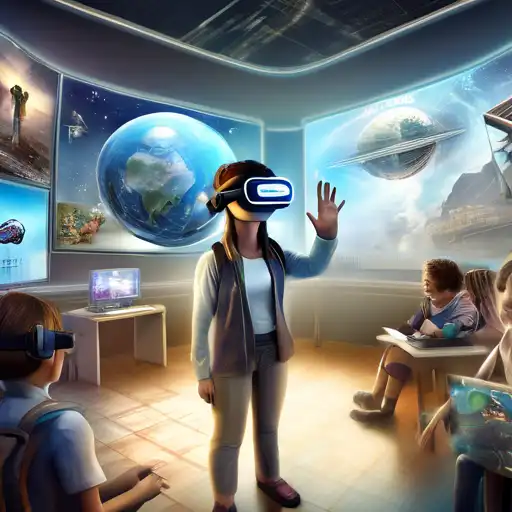Introduction to Virtual Reality in Education
Virtual Reality (VR) is rapidly transforming the educational landscape, offering immersive learning experiences that were once unimaginable. This technology enables students to explore historical sites, dissect virtual frogs, or even travel through space, all from the safety of their classroom. The potential of VR in education is boundless, making it a pivotal tool in modern teaching methodologies.
The Benefits of VR in Learning
VR in education offers numerous advantages, including enhanced engagement, improved retention rates, and the ability to simulate real-world scenarios. Students can practice surgeries, language immersion, or mechanical repairs in a controlled, risk-free environment. This hands-on approach fosters a deeper understanding of complex subjects.
Engagement and Motivation
One of the key benefits of VR is its ability to captivate students' attention. Traditional learning methods often struggle to maintain engagement, but VR's interactive nature ensures that learners are actively involved in their education.
Accessibility and Inclusivity
VR also democratizes education, providing access to high-quality learning experiences regardless of geographical location or physical ability. Students with disabilities can enjoy equal opportunities to explore and learn in ways that were previously inaccessible.
Implementing VR in the Classroom
Integrating VR into educational settings requires careful planning and consideration. Schools must assess their technological infrastructure, train educators, and select appropriate VR content that aligns with their curriculum. Despite these challenges, the investment in VR technology promises significant returns in terms of student outcomes.
Choosing the Right VR Tools
With a plethora of VR tools available, educators must select solutions that best fit their teaching goals. Factors to consider include cost, compatibility with existing devices, and the availability of educational content.
Challenges and Considerations
While VR offers exciting opportunities, there are hurdles to overcome. These include the high cost of equipment, potential health concerns such as eye strain, and the need for robust internet connectivity. Addressing these issues is crucial for the widespread adoption of VR in education.
The Future of VR in Education
As technology advances, VR is set to become an integral part of the educational ecosystem. Future developments may include more affordable VR solutions, enhanced interactivity, and personalized learning experiences tailored to individual student needs.
For more insights into innovative learning technologies, explore our articles on EdTech Trends and Digital Classrooms.
Conclusion
Virtual Reality is redefining the boundaries of education, offering immersive and interactive learning experiences that enhance understanding and retention. Despite the challenges, the benefits of VR in education are undeniable, making it a valuable tool for educators and students alike. As we look to the future, VR will undoubtedly play a central role in shaping the next generation of learners.
